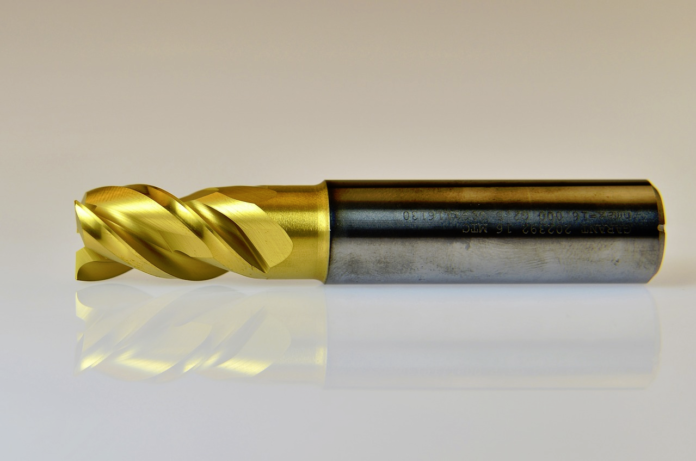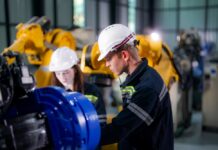While on paper it may seem like the manufacturing technologies behind 3D printing and CNC machining are oppositional to one another and perhaps even in direct competition, the reality is that a combination of the two is a potentially potent tool for manufacturers to leverage.
To understand how this partnership is worth pursuing in the modern era of manufacturing, here is a look at the benefits they bring to the table individually and where these can be integrated as part of a cutting edge production ecosystem.
Brief overview of the key differences
Before delving into the unified advantages of 3D printing and CNN machining, it is first worth establishing the areas in which they differ from one another.
3D printing, otherwise known as additive manufacturing, starts with a blank printing bed, and uses a printer to build up structures layer by layer, allowing them to appear as if from thin air. Everything from medical devices to works of art can be made via this method. Meanwhile CNC machines operate on the opposite principle; you start with a large piece of material and use tooling to subtract layers until the desired shape is achieved.
These distinctions also lead to differences in the speed with which each type of technology can operate. CNC equipment can work far faster, especially when simpler shapes are being made, yet may require more direct operator involvement to do things like change tooling or reposition parts mid-way through production, depending on the complexity. 3D printing is slower, but the additive nature means that comprehensive components can be printed from scratch with a single click of a mouse.
Material compatibility is worth touching on, since CNC machining is usually applied to metals, as well as to plastics and woods, while 3D printing can work with everything from thermoplastics and metals to ceramics, depending on the capabilities of the machinery and what the design calls for.
Finally there is the matter of precision, which is also generally greater in a CNC machining context, hence why 3D printing is not usually used when tolerances are unshakably tight.
Potential combinations
The main reason to combine 3D printing and CNC machining is that this can improve the efficiency of your manufacturing processes while also catalyzing, since this configuration will allow you to overcome the aforementioned limitations of each technology.
For example, say you want to make a part from plastic, but you are not convinced that additive manufacturing will be able to deliver the precision you need in a use case where tight tolerances are of paramount importance. The answer is to use 3D printing to make the part and then deploy CNC machining to trim it to the dimensions required, eradicating any imperfections that may have been created by the additive manufacturing hardware in the process.
This combination can also be excellent for time-sensitive operations. Say you want to create replacement components within a small window of opportunity, and thus do not have the time to wait for injection molding dies to be fashioned. In this case, you could set up a sequence of processing that works with the aforementioned 3D printing and CNC machining without needing to worry about any delays getting in the way of progress.
Most importantly, because both of these technologies are reliant on CAD files, it is quick and simple to make changes to designs and thus implement alterations to parts and products on the fly. Conversely, if you need to make a change to a die-based solution, this will create even more hold-ups.
Considerations
While we have painted a positive picture of what 3D printing and CNC machining can achieve in tandem, it is still necessary to assess the potential pitfalls that can crop up in such a scenario.
For example, you will need to take the subtractive nature of CNC machining into account when designing the 3D printed parts which will then be subjected to further processing. This is down to the layered nature of 3D printing; if the layers present are exhausted by the CNC equipment, there will be no material underneath to work with, and the part will need to be discarded.
Likewise if the part is especially irregular, there is a higher chance that the machining will lead to excessive removal of material. On top of this, you will need to employ people with experience using both systems in order to make the most of them, and potentially go back to the drawing board to make sure that your manufacturing processes are optimized for this fresh approach.
Other uses
3D printing and CNC machining can clearly be combined in the same manufacturing pipeline, but there are also indirect ways for these solutions to be used together that might grab your attention.
In the case of product assembly, especially when handled by human workers, it is obviously advantageous to keep errors to a minimum to maximize cost-effectiveness. The shape of the component may be a limiting factor, and it may not be feasible to build bespoke workstations because of the expenses involved. This is where 3D printing can be valuable, since it is quick and easy to create completely customized fixtures to act as a template for the assembly work, meaning machined parts can be put together more consistently and without steps being missed.
Conclusions
From rapid prototyping to full-blow mass production, 3D printing and CNC machining can now be seen as technologies that complement one another, rather than being competitors. All it takes is an innovative manufacturer to deploy them side by side, and success will follow.
This article has been written by Mike Dunlop






